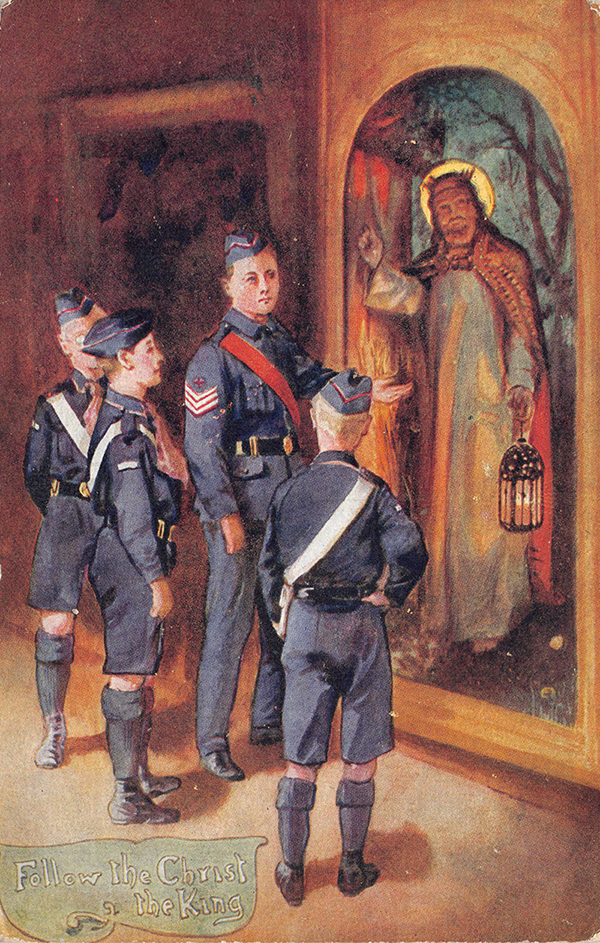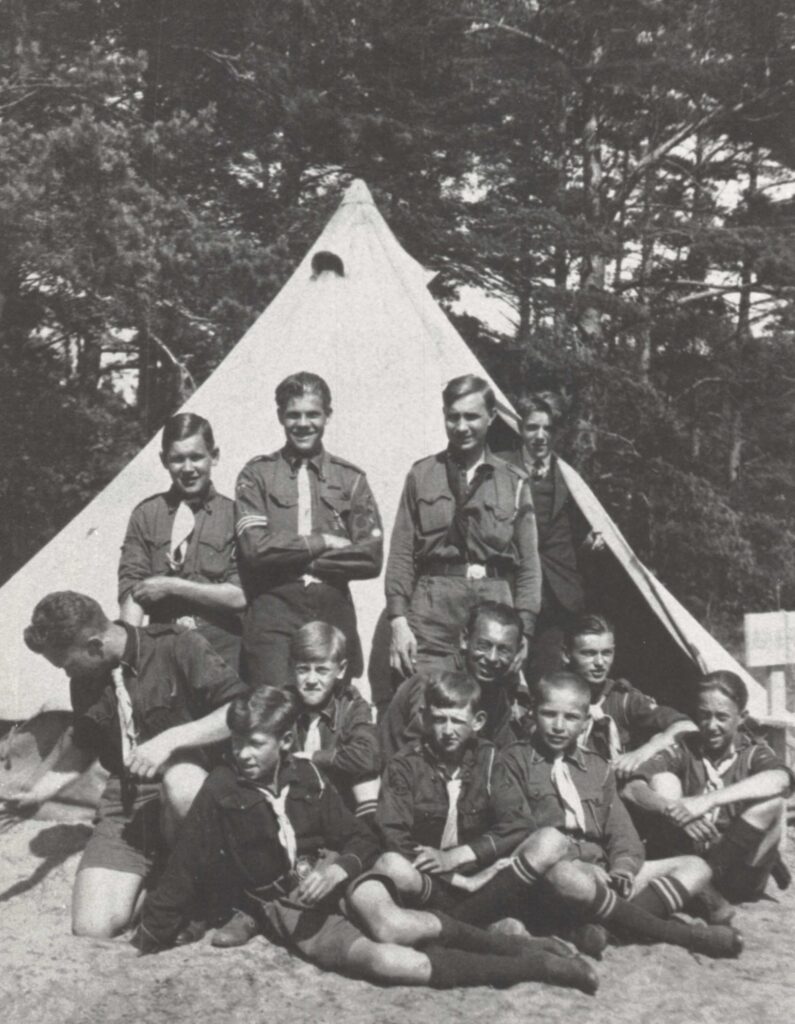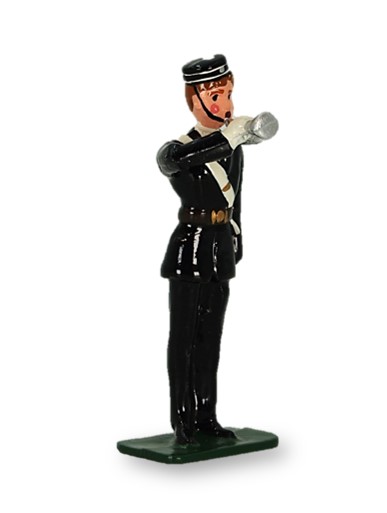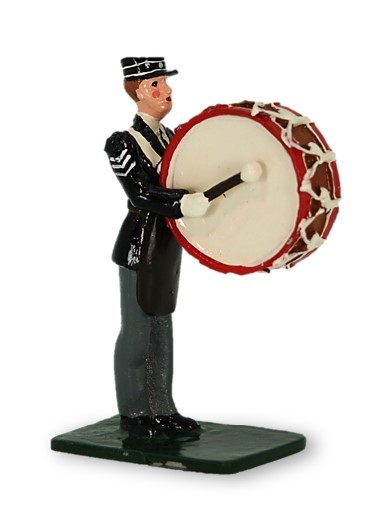
The Boys’ Brigade engaged in a number of exchange visits with German youth organisations in the 1920’s and 30’s, however these never resumed after World War II. From the early 1950’s, BB Companies from the UK engaged in ‘continental tours’, with Germany often being included in the tour itinerary.
The Boys’ Brigade never operated BB Companies in Germany, however, there were a number of BB Companies operating on British Military bases in Germany in the 1970’s and 80’s catering specifically for Boys of military families. These came under the governance of The Boys’ Brigade UK, and were administered as British Companies.
Records in the BB Archives for BB Companies on Military bases in Germany include: 1st Sennelager Coy, 1st Senden Coy, 1st Royal Scots Coy, 2nd Royal Scots, 1st Paderborn, 1st Laarbruch and the 1st Gordon Highlanders.

The Boys Life Brigade was founded in 1899 as a non-military boys’ organization working along very similar lines to The Boys’ Brigade. John Brown Paton, a Scot from Newmilns in Ayrshire but who had lived most of his life in England, was a Congregational minister, recently retired as Principal of the Nottingham Congregational Institute. He was an admirer of William Smith and the methods of The Boys’ Brigade.
Paton’s organization evolved out of the apprehension of many Churches, particularly in the Nonconformist sphere, at the paramilitary forms of the other Brigades. The Boys’ Life Brigade was to be an integral part of the Nonconformist National Sunday School Union, more so than the B.B., and the control and staffing of the organization reflected this influence.

The Boys Life Brigade was founded in 1899 as a non-military boys’ organization working along very similar lines to The Boys’ Brigade. John Brown Paton, a Scot from Newmilns in Ayrshire but who had lived most of his life in England, was a Congregational minister, recently retired as Principal of the Nottingham Congregational Institute. He was an admirer of William Smith and the methods of The Boys’ Brigade.
Paton’s organization evolved out of the apprehension of many Churches, particularly in the Nonconformist sphere, at the paramilitary forms of the other Brigades. The Boys’ Life Brigade was to be an integral part of the Nonconformist National Sunday School Union, more so than the B.B., and the control and staffing of the organization reflected this influence.

The Boys’ Life Brigade Chronicle of August 1925 reported the founding of the 1st Latvia Company of The Boys’ Life Brigade following a tour of Latvia by Mr. R. Ashley Smith, Propaganda Secretary of The Boys’ life Brigade in early 1925. By the time of the union with the Boys Brigade in 1926 a further 2 Companies had been started and by the late 1920’s, 6 Companies were recorded: 1st Grobinas Coy, 1st Eiepajas Coy, 2nd Eiepajas Coy, 1st Riga Coy, 2nd Riga Coy, and 1st Ventspils Coy.
In 1926 Private Treijans of the 1st Liepajas Coy was awarded the Boys’ Blife Brigade Cross for Courage.
By the 1930’s the Companies in Latvia were part of the Latvijas Laifu Brigade and recorded in The Boys’ Brigade annual report together with other kindred organisations.

The Boys Life Brigade was founded in 1899 as a non-military boys’ organization working along very similar lines to The Boys’ Brigade. John Brown Paton, a Scot from Newmilns in Ayrshire but who had lived most of his life in England, was a Congregational minister, recently retired as Principal of the Nottingham Congregational Institute. He was an admirer of William Smith and the methods of The Boys’ Brigade.
Paton’s organization evolved out of the apprehension of many Churches, particularly in the Nonconformist sphere, at the paramilitary forms of the other Brigades. The Boys’ Life Brigade was to be an integral part of the Nonconformist National Sunday School Union, more so than the B.B., and the control and staffing of the organization reflected this influence.

The Ansgarsforbundet in Sweden was founded by Karl Fromen in 1946 and was called the Ansgars Association of church juniors and worked closely with the Lutheran Church catering for both girls and boys aged 10-14. In 1958, Lillfylkingen was added for 7-9 year olds. Over the years, the number of teenagers increased and later a special senior activity was therefore added. These age changes meant that in 1969 the name was changed to Ansgarsförbundet – children’s and youth organization – within the Church of Sweden.
In September 1968 the World Conference Committee met in Northern Ireland and issued invitations to the kindred organizations in Denmark, Sweden, Finland and the U.S.A. to become full members.
The Ansgarsforbundet at the time of joined the World Conference Membership had a membership of around 14,000 boys in 200 local units. The Ansgarsforbundet was part of the European Fellowship.

The Boys’ Brigade Archive Trust relies on supporters to further the preservation and promotion of the Heritage of The Boys’ Brigade, ensuring that is is accessible and relevant to future generations of young people. If you are able to support our work though a financial donation, by the donation of artifacts, photographs and paperwork of by volunteering please click on the links below. If you wish receive our monthly newsletter please sign up. We look forward to hearing from you and advancing the work of The Boys’ Brigade Archive Trust.

Our volunteer researchers are constantly developing content for The Boys’ Brigade Virtual Museum.
Links to our brand new content can be found below.

The Boys Life Brigade was founded in 1899 as a non-military boys’ organization working along very similar lines to The Boys’ Brigade. John Brown Paton, a Scot from Newmilns in Ayrshire but who had lived most of his life in England, was a Congregational minister, recently retired as Principal of the Nottingham Congregational Institute. He was an admirer of William Smith and the methods of The Boys’ Brigade.
Paton’s organization evolved out of the apprehension of many Churches, particularly in the Nonconformist sphere, at the paramilitary forms of the other Brigades. The Boys’ Life Brigade was to be an integral part of the Nonconformist National Sunday School Union, more so than the B.B., and the control and staffing of the organization reflected this influence.